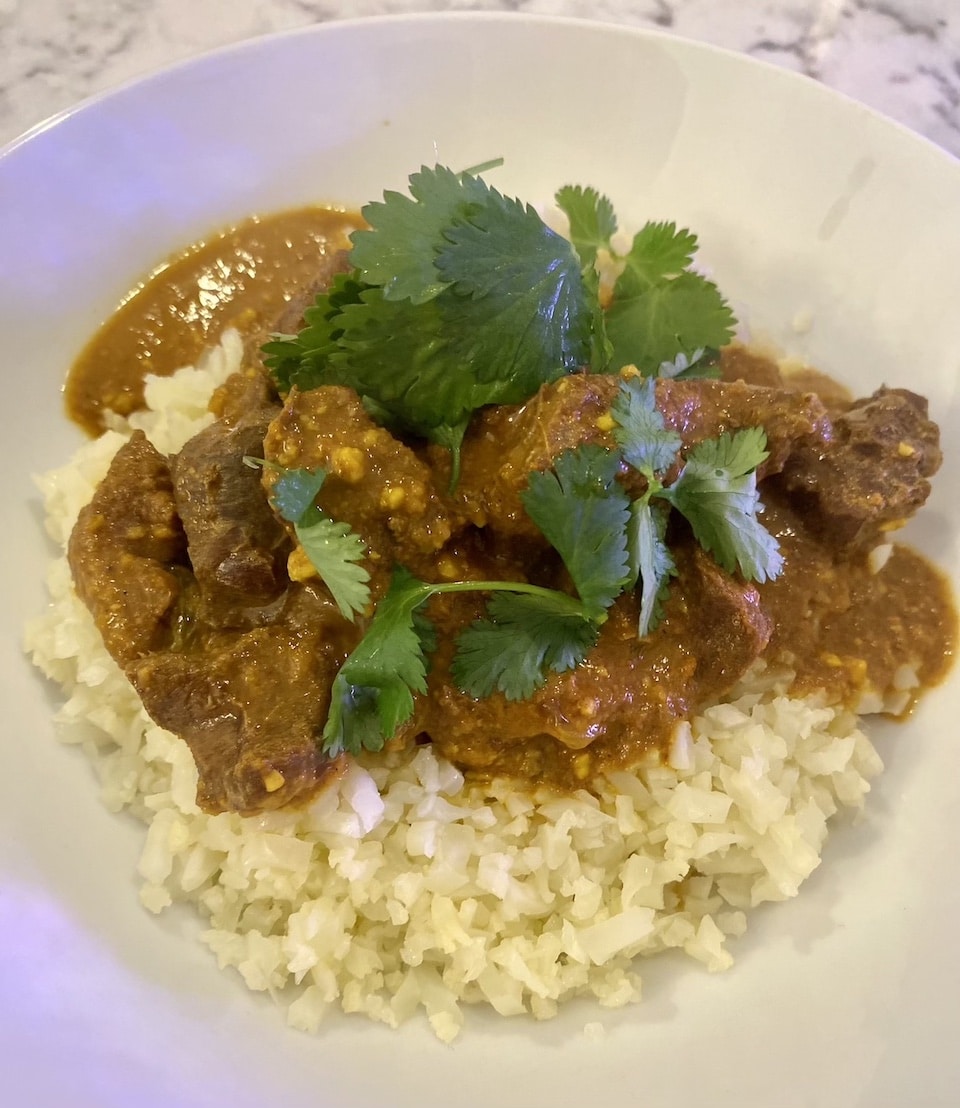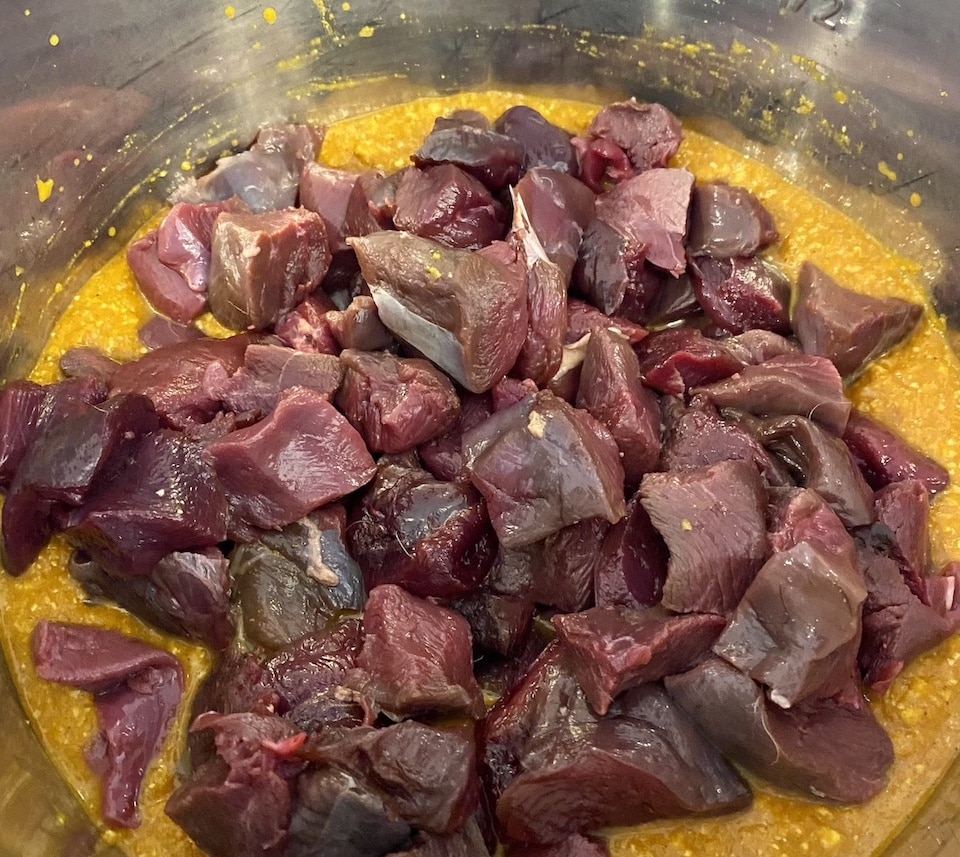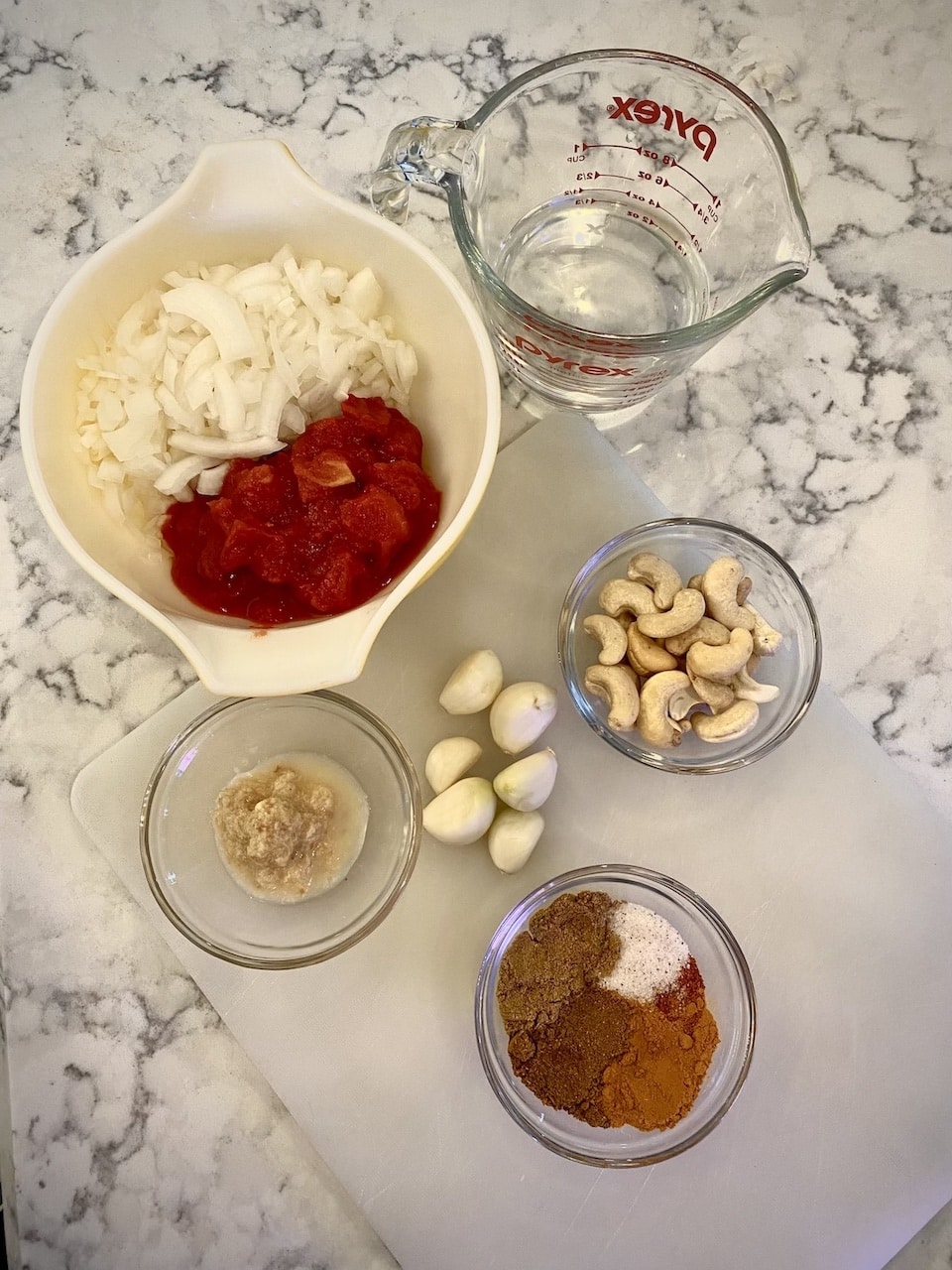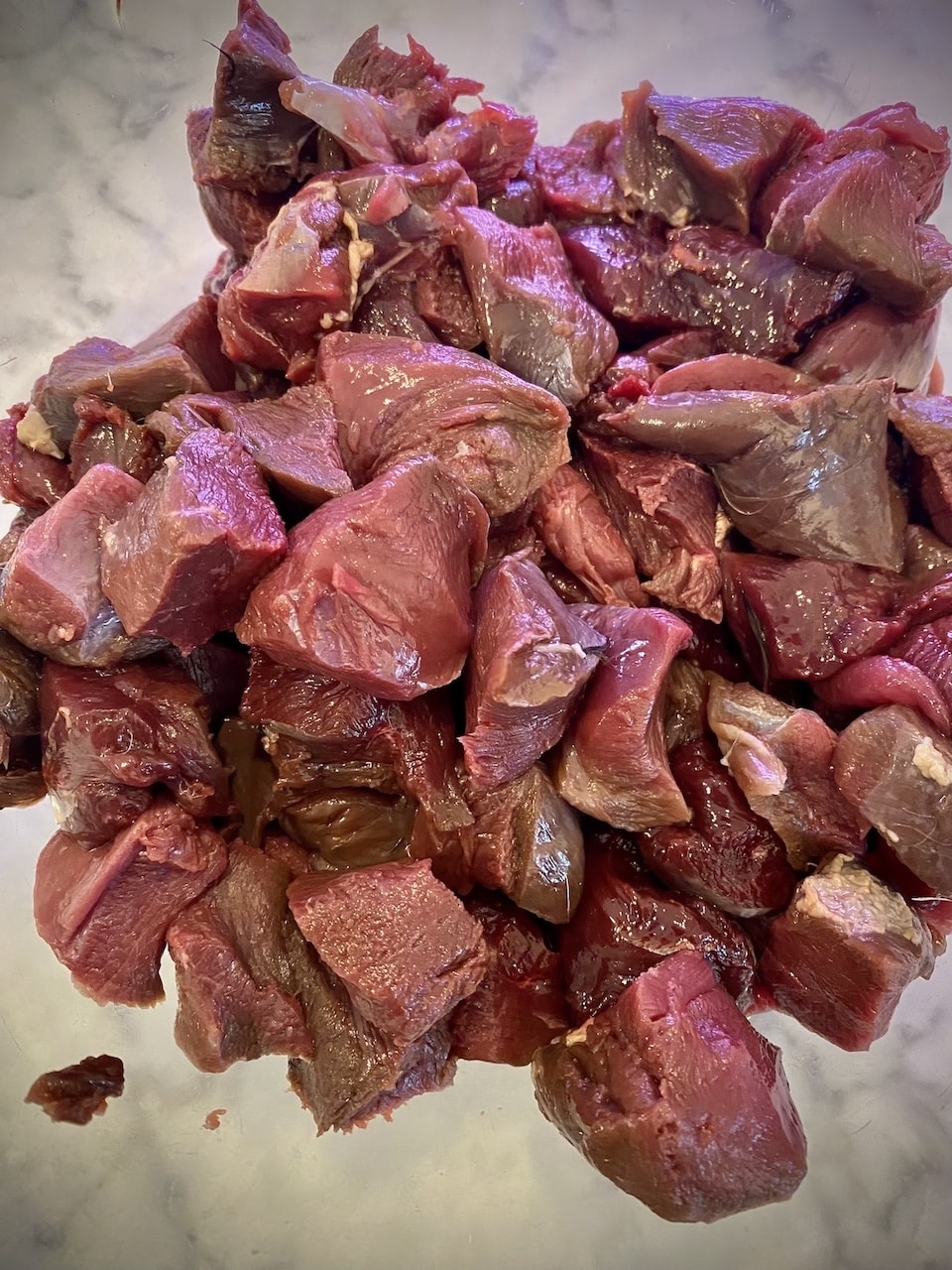The following post about Indian Korma is from our teenage writer and member of TeamWON, Anna. She has contributed several posts to The WON, including a recipe for Scotch Eggs. This time, Anna makes an Indian classic, with a wild game twist. The meat came to her by special delivery, from our publisher, Babbs, who hunted ducks in Arkansas last December. ~ The Editors

Everyone who loves Indian food is familiar with the dish korma. Our local Indian restaurant serves three types of korma: chicken, lamb, and paneer (Indian cheese). Occasionally, we try our hand at making Indian in our Instant Pot, and it’s always delicious. Recently though, we decided to put a twist on the classic dish with some wild duck meat we received from The WON’s Barbara Baird.
Korma consists of a meat or vegetable that has been braised in a rich sauce. Regional differences in ingredients and varied tastes in flavor mean that no two korma sauces will be exactly the same. Mom chose a chicken korma recipe from “Indian Instant Pot Cookbook: Traditional Indian Dishes Made Easy and Fast,”by Urvashi Pitre, as our base recipe.
We decided to use the Instant Pot because it cooks meat at high pressure, tenderizing it quickly and effectively. Wild game can sometimes be tough, so we utilized the Instant Pot’s quick cooking time, rather than slowly cooking the duck for many hours.
Mom started by cleaning and chopping the duck, which was still in large, bone-in pieces. The color of the wild duck really struck me while I watched Mom cut. It was as darkly colored as the venison from my elk hunt. Whenever we cook something with elk, it surprises me every time to see how dark it is compared to commercial meat. Seeing poultry the same color is very strange; I did a little bit of research to find out why duck meat is as dark as elk (results at the end of this post).

Generally, korma sauce is made from water or stock mixed with spices and some produce, usually onion and tomato. Some recipes call for yogurt, nuts, cream or coconut milk to make it creamier and richer. Spices include garam masala, turmeric, cayenne, cumin, ginger and garlic. All of this is blended into a puree that the meat is then braised in. It’s a very smooth sauce with lots of flavor going on. Sometimes korma is slightly on the sweeter side, or it can be spicy. This sauce a rich yellow to orange from colorful ingredients like turmeric, garam masala and tomato.

We made a few changes to the recipe to suit our family’s tastes. The recipe calls for Chile and cayenne pepper, but we didn’t use the Chile because some of us are sensitive to the heat in the spice. We also had a later dinner that day, so we were all hungry and completely forgot about the sliced almond garnish. We also added golden raisins because our local Indian restaurant puts them into some of their sauces. (When I find a raisin, it’s like a little explosion of sunshine in my mouth.)
Myoglobin is a protein found in cardiac and skeletal muscles that is responsible for supplying the muscle cells with oxygen. Meat with more of the myoglobin protein is darker than meat with less of it. Myoglobin content increases with physical activity because muscle cells need more oxygen to function. It also increases with age. Commercial animals don’t get much exercise because everyone likes tender meat, and they’re butchered at a relatively young age. For example, some cows are butchered when they’re only a year old, but my elk was about 5-to-7 years old. This means that any given wild animal that we shoot and eat will likely have higher myoglobin levels and therefore darker meat than any commercial meat we buy at the store.

If I didn’t know I was eating duck, I would have never guessed it. Color aside, the duck had a very unique flavor. It was almost like eating a red meat. I thought it was slightly reminiscent of both beef and lamb. Overall, it was an enjoyable meal, and extremely easy to prepare. Pressure cooking is a reliable way to tenderize meat, and it is so versatile. You can make everything from stews and soups to an Indian dish like this one with a great sauce. It truly is a great option for cooking wild game.
"Anna" is a teenage girl who loves to write, read, and do just about anything artsy. She enjoys writing about nature crafts and her experiences while learning to hunt and cook wild game. Anna firmly believes that backyard chickens lay the best eggs and that spending time outside with her flock every morning will start the day off happily. She is extremely grateful to her best friend, who inspired her to really take writing seriously. You can find her lost in her latest idea or listening to her sister "Rose" read book quotes. View all posts by Anna